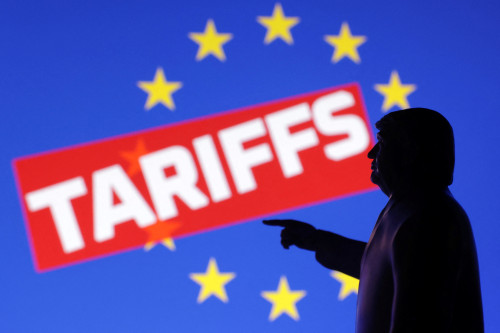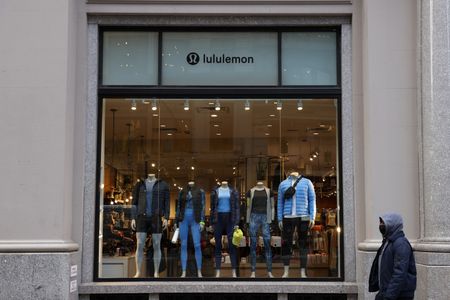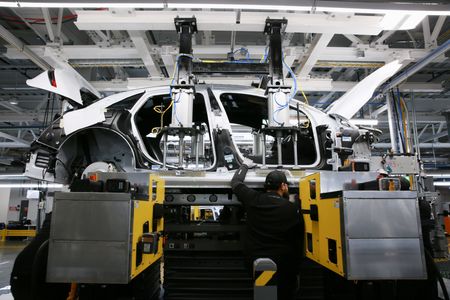By Philip Blenkinsop
BRUSSELS (Reuters) -The European Commission sought clarity from the United States after U.S. President Donald Trump recommended on Friday putting a 50% tariff on EU imports from June 1, with Brussels’ and Washington’s trade chiefs due to talk later.
The Commission, which oversees trade policy for the 27-nation European Union, said it would not comment on the tariff threat until after a call between European Trade Commissioner Maros Sefcovic and U.S. Trade Representative Jamieson Greer at 1500 GMT.
European stocks tumbled and the euro gave back some gains, while euro zone government bond yields fell sharply after Trump’s announcement.
“This is a major escalation of trade tensions,” said Holger Schmieding, chief economist at Berenberg. “With Trump, you never know. But this would be a major escalation. The EU would have to react and it is something that would really hurt the U.S. and European economy.”
The EU already faces 25% U.S. import tariffs on its steel, aluminium and cars and so-called “reciprocal” tariffs of 10% for almost all other goods, a levy that was due to rise to 20% after Trump’s 90-day pause expires on July 8.
Washington says the tariffs are designed to redress the U.S. deficit in goods trade with the European Union, which was almost 200 billion euros ($226.48 billion) last year, according to EU statistics agency Eurostat. But the United States does have a large trade surplus with the EU in services.
In the past week, Washington has sent Brussels a list of demands to reduce the deficit, including so-called non-tariff barriers such as by adopting U.S. food safety standards and removing national digital services taxes, according to people familiar with the paper.
The EU response has been to offer a mutually beneficial deal that could include both sides moving to zero tariffs on industrial goods, the EU potentially buying more liquefied natural gas and soybeans and cooperating on issues such as steel overcapacity, which both sides blame on China.
The Sefcovic-Greer call was planned as a follow-up to these exchanges and ahead of a possible meeting in Paris in early June.
Polish deputy economy minister Michal Baranowski, whose country holds the rotating EU presidency, said the 50% tariff threat appeared to be a negotiating ploy.
“The European Union and the United States are negotiating. Some negotiate behind closed doors, others more in front of cameras,” he told reporters on the sidelines of a meeting in Brussels, adding negotiations could last until early July.
“The fact that we see some important statements in the public domain does not mean that they will translate into actions of the U.S. administration,” he said.
The European Commission has repeatedly said it preferred a negotiated solution, but is ready to wield countermeasures if negotiations fail.
The bloc put in place, but then suspended, duties on 21 billion euros of annual U.S. imports in response to the U.S. metals tariffs and has compiled a list of 95 billion euros of U.S. goods as countermeasures to the U.S. ‘reciprocal’ and car tariffs.
($1 = 0.8831 euros)
(Reporting by Philip Blenkinsop, Jan Strupczewski and Bart Meijer; Editing by Toby Chopra and Susan Fenton)




